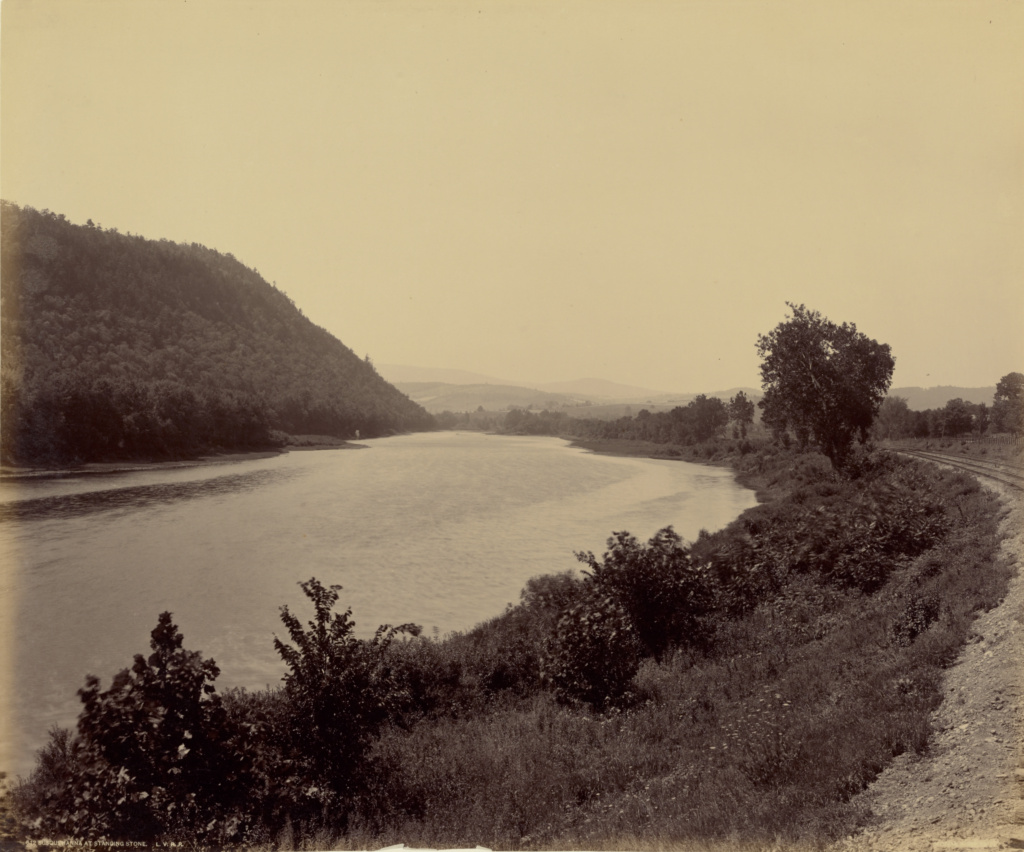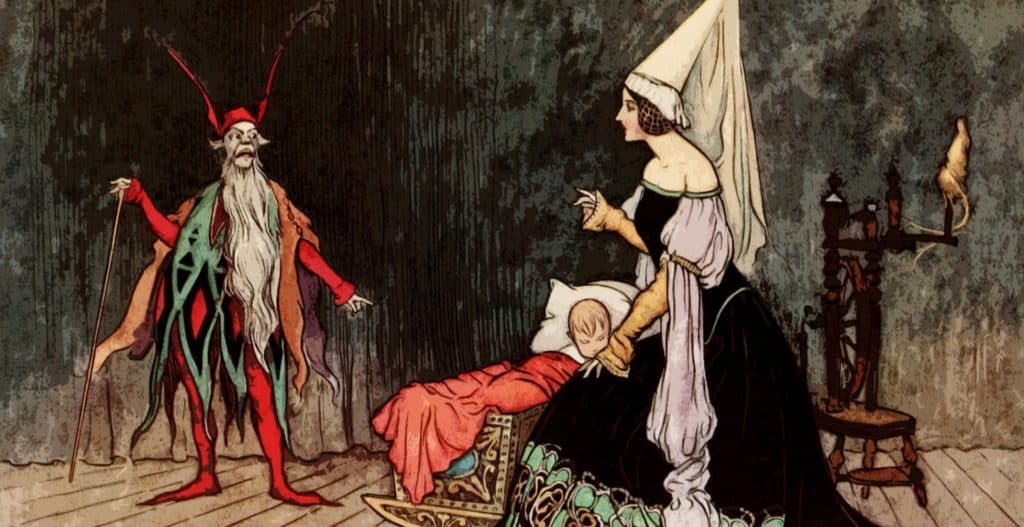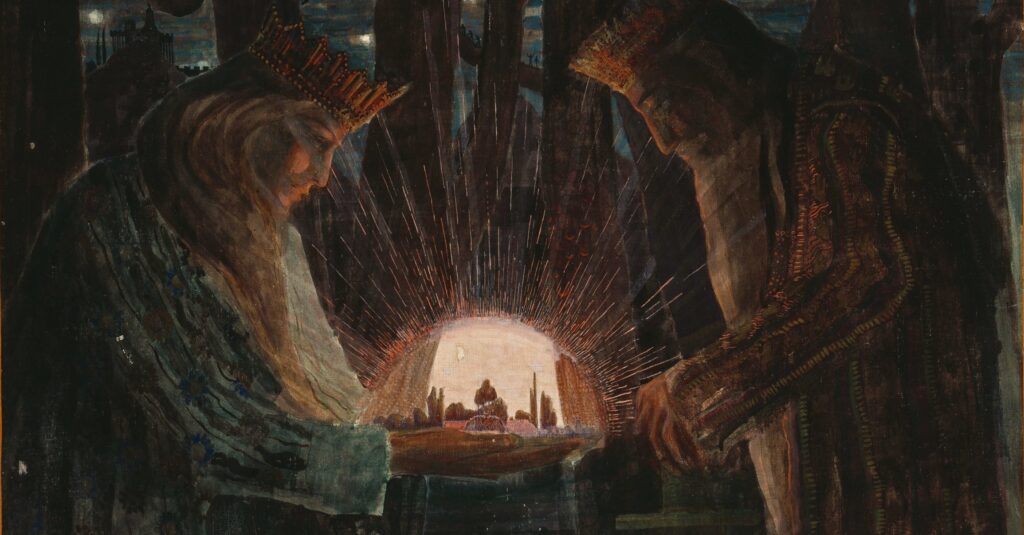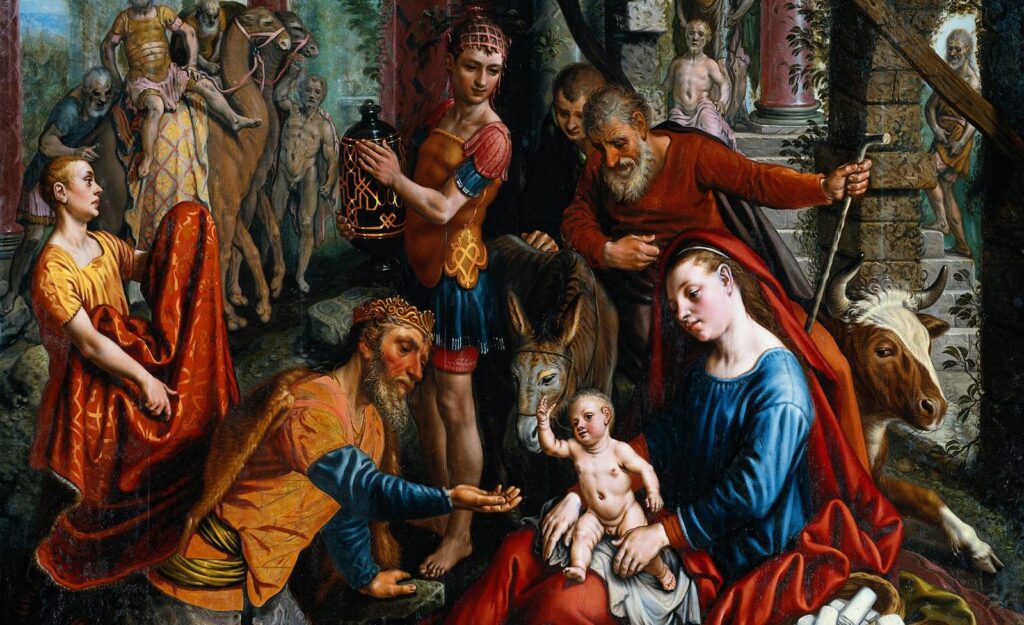
Why Everyone Should Believe in Fairies (Part Three)
Indwelling Our Places
Third in a Four-Part Series:
I. Human History
II. Christian History
III. Our Places
IV. Our Classrooms
Having taken something of a historical survey, I’ll briefly share my own thoughts in summary. Fairies make great sense theologically when all of creation is understood as incarnational, with Jesus Christ and humanity having a nature that is in communion with all else — given that humanity exists as the divine image and all things are created and sustained by divine life. It also helps to note that there are multiple human and angelic falls recorded in the Old Testament; and that no New Testament or early Christian author would have taken issue with the existence of a wide variety of angelic and human-like species, each with a mix of motives and moral standings. After all, the universal understanding of the Nephilim at the time of Christ and for centuries afterward was that they were the children of humans and angels:
… it was a central tenet of the most influential angelology of the [New Testament] age, derived as it was from the Noachic books of the intertestamental period, that angels had actually sired children—the monstrous nefilim—on human women. It is even arguable that no school of pagan thought, early or late, perhaps not even Platonism, really had a perfectly clear concept of any substance without extension. (1)
At the end of the day, I agree with Lewis that it is a blessing to have fairies as creatures who have no “official status” assigned to them and that they can thereby “intrude a welcome hint of wildness and uncertainty into a universe that is in danger of being a little too self-explanatory.”
Going even a step further, the middle spaces occupied by fairies and other such creatures actually help to make clear the ways in which all of creation is mixed inextricably together and participates in the eternal life of God. In all of the literature on fairies, there is a strange combination of independence and dependence when it comes to the world of fairies and our “everyday” human lives. Fairy culture is repeatedly portrayed as free and separate from human life, while also being both positively and negatively affected by our day-to-day decisions and actions.
Many have spoken of fairy culture changing or developing alongside the human cultures nearest to them. For example, Hart contrasts the “more Titanic than Olympian” character of the New World fairies with “the winsome charm of their European counterparts” who were “exposed to centuries of Greco-Roman and Christian civilization.” (2) In his book Roland in Moonlight, Hart mentions that European fairies long ago became happy socialists (no doubt in the mode of John Ruskin, Hart’s own preference). Understandably, this tracking of fairy cultures alongside human cultures is often taken to be a projection of a colonial mindset. It is better understood, however, as just one example of the way in which all of life is interconnected. Creation goes through multiple ups and downs together, with more than one rise or fall happening at any given time. No doubt, the devastation of modern human lives driven into spiritual isolation and the incessant consumption of manufactured products has had a profoundly negative impact on the worlds of fairies, driving them also to their own kinds of isolation and destruction.
When it comes to understanding how all of this works, one of my favorite phrases is the one (quoted in Part I) from John Calvin: “God exerts and diffuses his energy in a secret manner, so that no creature is content with his own peculiar vigor, but is animated by angels themselves.” This almost Platonic language emphasizes our intermingled lives. While this is what makes divine communion an ultimate reality, within the topsy-turvy and contingent history of our fallen world, this intermingling shows up in a host of conflicting, inconsistent and even terrible ways.
At the same time, the literature also presents us with a different image, of fairies simply delighting in their own lives, free within creation’s bounty, beauty, and peace despite all of the misery and destruction. “There lives the dearest freshness deep down things” as Gerard Manley Hopkins wrote. C.S. Lewis describes three kinds of fairies in his lecture on “The Longaevi,” and we certainly have a wide variety of not only kinds but of worlds and cultures among such creatures. Some of these kingdoms may be more bound up with our human fall than others, and some kingdoms may have a fallenness of their own to carry for a time. Even in Genesis, the experience of a fall is recounted in several ways and for several kinds of creatures.
What can belief in fairies do for us? At a minimum, it might be argued that the first benefit of any kind of belief in fairies is to strengthen our relationship with the world at large. Belief in fairies can slow us down, help us to attend and to be more ready, as Lewis says, to eventually hear about the kingship of Jesus Christ as something relevant to all of creation. Finally, in addition to helping us see and respect the world around us, the world of fairy can also show our fellow humans to us more fully. Tolkien intentionally connected his mythology with our own current history in order to propose that human children of the ancient elves still walked our earth. (3) In Meeting the Other Crowd, Eddie Lenihan writes with respect for the Christian tradition while just outside of it, and he uses the idea of “changelings” to consider this idea of seeing our fellow humans as inhabiting the fairy world:
Christianity is clever here. It says that we are to see Christ in our fellow man, that this is how we may see God. But could anyone imagine seeing the fairies in his fellow man? …We see the otherworldly in our this-worldly “fallen” fellow man …in order to help him become what he really is, or get back to what he once was.
However, whatever the “benefits” might be from any kind of belief in fairies, it is most likely a serious distraction (not to mention pagan worship) to dwell upon them. What I am advocating is simply a respect for the stories about them, and the ways that our ancestors lived — in closer communion with each other and with their places than we typically do in our modern world. In the end, I do not think that we should seek to “regain” these ways of life and these ways of seeing. However, with patience and quiet respect over generations, we may be able to find new ways of dwelling in our places and of seeing layers of interconnected life within our world. Toward this end, I’ll conclude by sharing one extended example of how I’ve enjoyed dwelling as fully as I can in a particular river valley and come to appreciate something of its life.
The Susquehanna River
Despite my own experience of having moved to new homes over 30 times across three continents, and of spending most of the first 18 years of my life in southern Taiwan before returning to spend most of my adulthood in the northeastern United States, I have been blessed by some sense of place. To a large extent, my most personal and extensive sense of place has revolved around my neighborhood’s central watercourse, the Susquehanna River. I hope that my account of this provides something of a practical conclusion to my reflections; and I invite everyone to recognize the many obvious and simple applications of this account within their own lives.
The Susquehanna River is among the oldest in the world. At 543 to 248 million years old, there is evidence that this river predates the formation of the Appalachian Mountains and is older than much of the bedrock over which it flows, having long ago carved out its channel in the older rocks beneath the bedrock. In fact, the Susquehanna once flowed in the opposite direction, northward out of the now vanished Taconic Mountains, which the ancient river carried away into a sea out of which new mountains eventually rose. Along the flat bottom of a 40-mile-long gorge near the river’s end are the Susquehanna Deeps: six long and narrow depressions that extend 100 feet downward to well below sea level. This incredible history has inspired many state and local geologists such as Jeri Jones and has consistently landed the Susquehanna on lists of ancient rivers. (4)
My own memories of the river are rich and varied, beautiful and tragic. Starting at the age of five, I can remember spending two long summer furloughs with my family in Otego, New York, just below the Susquehanna’s current headwaters. My uncles and cousins took me fishing in Briar Creek near the headwaters, and, once when I was closer to ten, some of us followed the creek on foot all the way to the river. During the start of middle school, I lived for a while about a hundred river miles to the south near where the Susquehanna crosses over into Pennsylvania. One Sunday morning, by terrible happenstance, I watched my good friend’s father leap into the river to his death from a highway bridge. He was a medical doctor with cancer and taking medication that caused devastating mental health side effects.
For a year after college, I lived beside the Wyalusing Creek and paddled down it to the Susquehanna several times, once leaping from the canoe to foolishly catch a baby wood duck that ended up being swallowed whole by my sister’s dog. Now, decades later, I live near the end of the river’s meandering journey through eastern Pennsylvania. Dotting the river are large islands with their own rich histories. I have watched minor league baseball in the stadium on City Island, and sat with my wife’s godfather listening to stories of his ancestors, who lived and farmed on Shelley Island for generations before the nuclear power plant built nearby on Three Mile Island forced them to leave. For multiple summers now, I’ve camped with family and friends on some of the Susquehanna’s many other unnamed islands.
While living in York, I have splashed down to the river with my children along Willis Run and Codorus Creek. While living in Harrisburg, we have likewise found our way to the great water by wandering down Parkway and Spring Creeks. This summer, my father is scheduled to finish the last leg of his kayak trip down the river’s 444 miles to the start of the Chesapeake Bay. For several years now, I’ve also stood in the snow with priests and parishioners from a few local churches as we sang the hymns of Theophany and celebrated Christ’s baptism here in our own river, rejoicing in its union with the holy waters of the Jordan.
The varieties of life along our river contrast in a thousand ways with the slow life of the ancient river itself. Sit quietly and you will see countless blooms — kingcup, bluebell, Jerusalem artichoke, cardinal flower, Joe-Pye weed — growing beside the Susquehanna and its tributaries. Read Andrew Moore and you will learn about the pawpaws cultivated along its southern valley for generations before the Mayflower landed at Plymouth. Float slowly over some of the countless ancient eel weirs constructed along its riverbed, and you will experience the work of people with languages no one has spoken for millennia. (5)
When the sunlight dances on the surface of the Susquehanna or a stone rolls slowly over in its current, there is a life on display and a speech pouring forth that is older and slower than my life or the life of the rocks or the flowers or the eels. The Susquehanna is only a passing name for this ancient life spent gathering rainwater, reflecting sunlight, and moving mountains. It is a life with distinct features and yet fully present and participating in each of my moments spent beside it. This life is revealed to me and bound up with me and yet still a life that obviously does not belong to me. It is a life that is devastatingly foreign to mine and yet intimately connected. Whoever these creatures might be who live along the Susquehanna, I have no capacity to see in any full or direct way, but I can make some effort to see the life of these beings in the beauty of a river that I can see.
In fact, even though we cannot see the inner life of hills or streams, trees or flowers, we should love the stories told about them as well as all that we can see of these lives. I agree fully with David Bentely Hart regarding our “real moral imperative in not dismissing such tales” that tell us of how “water spirits and magical marine beings of every kind are real and numerous and, in certain circumstances, somewhat dangerous” (see Part One). Christians are disingenuous when we advocate loudly for the existence of God or defend the bold witnesses of women and fishmen regarding the bodily resurrection of Jesus Christ but then, at the same time, laugh at the idea of God’s creation being alive and intended for full participation in the life of God. I am convinced that this is one of several ways in which Christians have ceded the field to secular modernity without even realising that we have done so. By defending God and chuckling politely over fairies, we unwittingly lend credence to those who consider God to be nothing more than just the greatest fairytale. Instead, as Christians, we should live and love in ways that show forth and give respect to the sacramentality of all creation—to the eternal goodness of everything that God has made. Our lives and our classrooms should continually reveal as true what C. S. Lewis sees as the most basic vision of our cosmos:
In every sphere there is a rational creature called an Intelligence which is compelled to move, and therefore to keep his sphere moving, by his incessant desire for God. …The motions of the universe are to be conceived not as those of a machine or even an army, but rather as a dance, a festival, a symphony, a ritual, a carnival, or all these in one. (6)
In my final and fourth instalment, I will focus on a variety of particular examples of the ways in which we can do this as teachers in our homes and schools. These will be from stories of other teachers that I have heard as well as ideas that I have tried out for myself. With these practical ideas as inspiration, I hope that more people will continue to swap such stories over the years — I know that many others share this hope of helping our students to see God’s world for what it most truly is: a great living and ongoing act of worship and delight. (7) Or again, as Lewis puts it so well, our universe is the combination of a dance, a festival, a symphony, a ritual, and a carnival.
- From “The Spiritual Was More Substantial Than the Material for the Ancients” by David Bentley Hart. Church Life Journal, July 2018. Hart wrote in his March 10, 2022 Substack newsletter Leaves in the Wind: “One must cease to think that only the material body possesses extension in any sense; one must learn not to treat words like ‘soul,’ ‘spirit,’ and ‘mind’ as interchangeable terms for one and the same thing; and one must most emphatically not think of soul or spirit or mind as necessarily incorporeal in the absolute sense of lacking all extension or consistency.” And regarding this understanding of spirit by Paul, Hart writes: “There are all sorts of things in Paul that cannot be directly retained, but that one seems unproblematic.”
- “The Secret Commonwealth,” First Things, October 20, 2009.
- From The Letters of J.R.R. Tolkien edited by Humphrey Carpenter and Christopher Tolkien, Letter 211, (dated 14 October 1958): “I hope the, evidently long but undefined, gap in time between the Fall of Barad-dur and our Days is sufficient for ‘literary credibility’, even for readers acquainted with what is known or surmised of ‘pre-history’. . . .I imagine the gap to be about 6000 years: that is we are now at the end of the Fifth Age, if the Ages were of about the same length as S.A. and T.A. But they have, I think, quickened; and I imagine we are actually at the end of the Sixth Age, or in the Seventh.” Two years after this letter, Tolkien changed this idea and wrote that, instead, we were already in the year 1960 of the Seventh Age. See The Nature of Middle-earth edited by Carl F. Hostetter, “Part One. Time and Ageing: VI. The Awaking of the Quendi”, p. 39.
- See these various sources for more material related to information in this paragraph: here, here, here, here, here, and here.
- An old capture basket at the end of an eel weir in Maine was carbon-dated to 6,000 years ago or two thousand years before the great pyramids of Egypt.
- From Studies in Medieval and Renaissance Literature by C. S. Lewis.
- Consider, as examples, books such as Cosmic Liturgy: The Universe According to Maximus the Confessor by Hans Urs von Balthasar, Heavenly Participation: The Weaving of a Sacramental Tapestry by Hans Boersma, or For the Life of the World by Alexander Schmemann (originally titled The World as Sacrament).








Responses